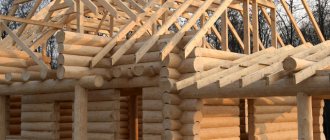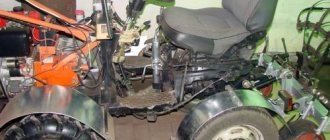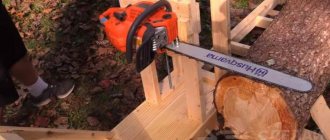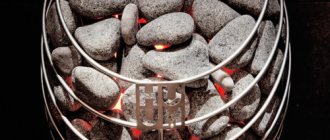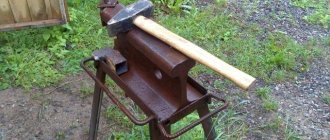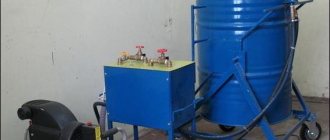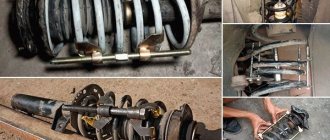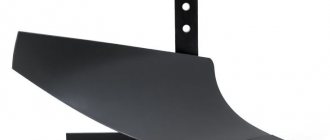Articles
All photos from the article
The history of the construction of wooden residential buildings goes back to the distant past. In those days, the most important factor in construction was the availability of building materials, which was wood.
It was easy to process and did not require the use of any special tools, which, however, did not exist. Now the tree is processed using machinery and modern technologies, which predetermined the appearance of rounded logs, which we will discuss below.
This is how logs are rounded on an industrial machine.
Today, blanks can be made to a certain size - length and diameter. Taking into account the fact that wood has low thermal conductivity and increased sound insulation, which allows you to maintain warmth, peace and quiet in the house, the material is in demand more than ever to this day.
Equipment for cylindering logs in production
Equipment use
Modern machines make it possible to carry out rounding so that the prepared log is suitable for installation in wall structures without finishing. The functionality can vary significantly, depending on the design features of the rounding machine and its cost.
When considering all drawings and models of equipment that is used for rounding logs, attention should be paid to the following points:
- Creation of grooves that can be used during installation to solve various problems.
- Production of edged boards, parquet, dies.
- Carrying out cylindering work, including the final stage of the task under consideration.
- Milling the surface of wood to achieve the desired roughness.
- Creating a crown cup.
- Production of gun carriages by cutting wood.
- Creating an expansion groove using an installed circular saw.
One should take into account the fact that a self-made rounding machine may not have all the functions, since for this purpose complex projects must be used in its production. The easiest way is to create non-universal equipment that is designed to solve specific problems, for example, rounding workpieces.
Characteristics and advantages of prefabricated milling cutters
Profiling timber is a responsible process that determines the quality of the building material and the density of its connection in the wall. A wide selection of cutting tools with different mounting and working diameters allows you to select cutters for the production of timber and logs that correspond to the technology.
The range includes universal tools and elements for performing specific work: round cutter; kits for making grooves, making locks and processing ends; cutters for making single-tenon timber, etc.
Each set includes a certain number of cutters, which expands the range of products manufactured on the machine. Prefabricated cutters for the production of timber process each element with a separate knife made of high-quality carbide steel, this reduces the load on the tool and machine components and increases productivity.
When using prefabricated elements, the need for sharpening is eliminated, and tool replacement does not require reconfiguring the milling machine, since the diameter and profile of the cutter body remains unchanged.
Milling of lumber is carried out using different equipment: manual machines, low- and high-power equipment. Cutting tool kits have detailed instructions for their installation on equipment and use.
Features of modern industrial models
The main feature of machine models produced by well-known manufacturers today is the use of a laser pointer to control the movement of the carriage. This point determines high processing accuracy and the ability to carry out the entire process without reinstalling the workpiece. Thus, a CNC-controlled carriage with a set of tools moves along guides and performs various types of operations.
Log rounding machine
As practice shows, you can make a model with your own hands that will have manual control and the ability to process workpieces up to 7 meters long.
Classification
Currently, three types of rounded logs are available to consumers, differing in cost, as well as quality and processing technology:
| Natural humidity |
This is explained by the fact that at the first stage the house goes through a natural process of shrinkage and shrinkage. |
| Dry | Buildings constructed from such material do not require shrinkage, since it occurs during the production process. In this case, the latter consists of 2 stages:
Having gone through all stages of preparation, the workpieces are processed to final size, and then the bowl and heat lock are cut. The duration of the production process has a direct impact on the cost of the material, which is an order of magnitude higher than those logs that require a natural drying process. |
| Glued | The most expensive building material of this type, this is due to the complexity of the production process. |
Machines for rounding logs allow you to prepare the material for the house with the required smoothness
Processing stages
- First, the logs are sorted depending on their type and purpose.
- All rejected material is selected for further processing into lumber.
- The process of manufacturing rounded blanks is the most important processing stage. For these purposes, equipment for rounding logs is used - turning and milling machines belonging to the heavy class. During processing, the logs are given the shape of a regular cylinder, and the thickness of all workpieces should be the same.
Advice: deviation is possible, but it should be insignificant, no more than 2-4 mm.
- Next, a mounting groove is milled on the wooden blanks, designed for stability and a tighter fit of the logs in the structure.
- A compensation cut is made on each log to avoid cracking during drying.
Homemade machines for rounding logs with your own hands
For further processing, an optimization line is used, which allows you to perform the following operations related to the direct cutting of the material:
- cutting bowls - serves to add strength to the wooden structure, which serve as corner locks during installation;
- trimming logs along the length - allows you to give the elements a size that matches the documentation of the house;
- grooves and tenons are made at the ends of the blanks for fastening logs, as well as installing windows and doors.
Then they are coated with a protective compound that prevents the formation of rot and fungi on the wood, and also protects it from the effects of pests. Also, this processing process is aimed at increasing the resistance of the material to possible fire.
Homemade machine for rounding logs from a screw-cutting lathe
Features of the design of the design in question
When considering what kind of homemade rounding machine drawings may have, we note that often the design has the following elements in one form or another of their implementation:
- The main and most cumbersome element is the frame. It is on it that stress is concentrated and all other elements are attached. When making the frame, it is recommended to use rectangular pipes. The connection of all elements is often carried out using welding, which allows you to speed up work and create a truly durable structure. However, it is possible to create a frame using a combination of a bolt and a nut. Collapsible frames are more mobile, but have less rigidity.
- Guides along which the power saw and sawing device will move. The length of the logs can reach several meters and weigh tens of kilograms. In order to significantly simplify the processing task, you should create a homemade rounding machine on which the tool moves, and not the workpiece.
- Pasterns: front and back, in some cases, only one. They are necessary to twist the logs during processing. Note that the front one quite often has a dividing head and a workpiece fastening system. Using the dividing head, you can set the rotation angle at each stage of processing, which is necessary to improve the quality of the workpiece.
- As a rule, a milling cutter is used as a cutting tool. There are quite a lot of types of this cutting tool. When considering how to make a cutter with your own hands, we note that the work is complex and involves the use of rolled tool steel, which has increased strength and a low degree of machinability.
- A high-quality cutter has replaceable knives that can be sharpened and replaced if necessary. The cutter itself does not wear out over time.
- To correctly place a log that has a lot of weight, special levers are installed.
- The rollers, acting as a stop, do not allow the log to sag during processing, thereby significantly increasing the quality of the resulting material.
- Almost all models have mechanical brakes that are installed on both sides of the carriage. They are necessary to perform the work of selecting the crown bowl.
- A device that allows you to rotate the steel manually at the time of cutting a longitudinal groove.
Principle of operation
These elements have many drawings that you can use to create a rounding machine with your own hands at home. However, the design can be significantly simplified by taking into account the problems for which it is being created.
Types of cutters for making timber and logs
The tool is designed for profiling timber and logs, providing excellent processing quality and high productivity.
There is a wide selection of cutters and kits available for sale to perform all types of work related to the profiling of building materials. The cutters for profiling timber, presented in our catalog, give the building material the necessary configuration. During the processing process, the cutting tool is subjected to high loads, so it is made of durable types of steel, which increases its service life and minimizes the likelihood of breakage.
At the production stage, the blanks have different lengths, so to obtain the finished building material, the timber is processed in accordance with the specified standards. To obtain lamellas of the required size, the profile is milled; cutters are used for this work.
The assortment includes cutters with soldered and replaceable knives:
- Tool sets with replaceable knives are a collapsible design consisting of a body and a set of several knives.
- Carbide-tipped log and beam cutters are capable of working with any type of wood, providing fast and high-quality profiling.
When working with logs and beams, you can use universal cutters, producing building materials of different sections and thicknesses. The advantage of such tools is the ability to split the profile into several components and the ability to adapt to the thickness of the material being processed.
The cutters for profiled timber offered by our company are used on milling machines. The choice of tool largely depends on the type of material being processed. Carbide cutting inserts are most often used when working with hard wood.
